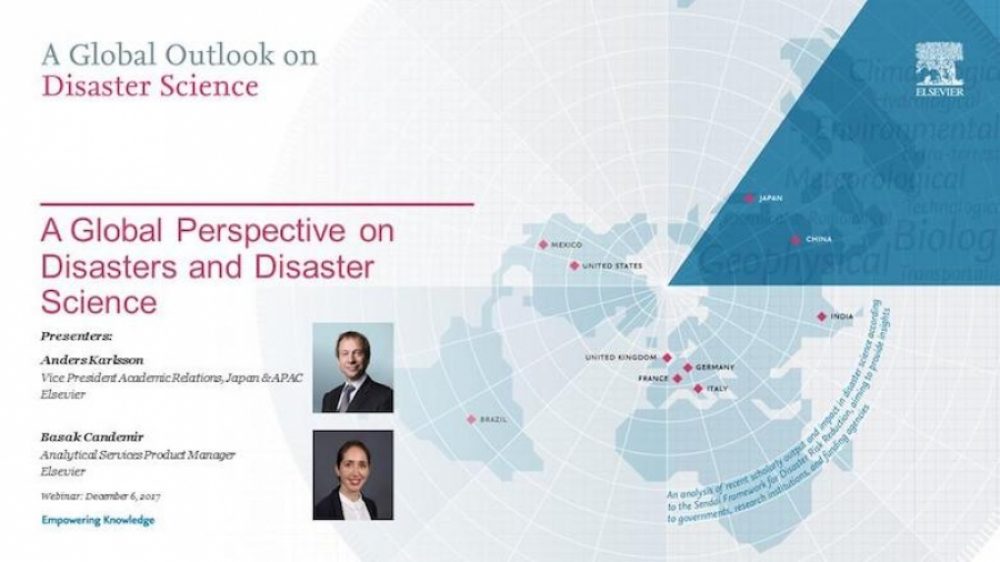Elsevier will host a webinar to introduce the new report, “A Global Outlook on Disaster Science” on December 6 at 8:30 a.m. (UTC).
The report describes how developing regions in Asia suffer greater economic losses as well as loss of life from natural disasters. Every year, disasters impact human lives and take a significant economic toll. Despite greater losses from natural disasters, many developing Asian countries also publish fewer disaster science papers.
For the report, Elsevier has partnered with leading international institutions and drew upon high-quality global data including Scopus to examine the state of worldwide disaster science research. Elsevier hopes to show how science plays a key role in reducing disaster risk and mitigating the impact.
Key findings (2012-2016):
.27,273 scholarly publications cover disaster science—0.22% of global scholarly output
.More scholarly output on disaster management stages: prevention (17,598) and preparedness (15,125) than response (11,623) and recovery (3,671)
.Across all 10 disaster types, scholarly output on geophysical disasters is the greatest (9,571 publications)
.Disaster types with more than 5,000 publications: geophysical (9,571), meteorological (6,767), chemical & radiological (6,445), and hydrological (6,237)
Anders Karlsson (Vice President Academic Relations, Japan & APAC) and Basak Candemir (Product Manager, Analytical Services) will present the report’s key findings and ask how it can support policy- and decision-makers in governments and universities on natural and man-made disasters.
Please click here to register for the webinar.

